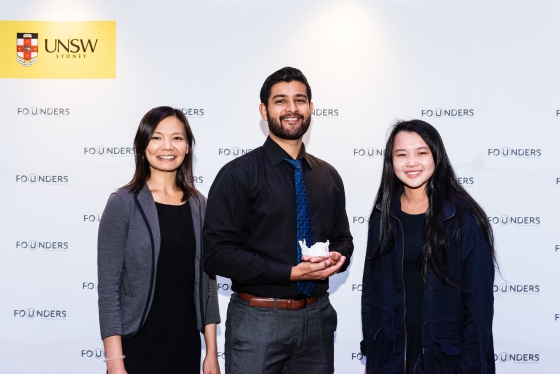About Osteon
Osteon’s technology is based on 2.5 years of research at UNSW in the Schools of Chemistry, Materials Science & Engineering. The technology 3D prints synthetic bone structures in a liquid bath based on a patient’s CT scan showing where bone is missing. The supportive bath enables complex shapes of bone structures to be printed, while the 3D printing technology means each structure is designed custom for each patient. The ink formulation does not require heat treating after printing, resulting inbone structures that are less brittle. Overall, the resulting bone structures heal faster and can bear more weight than existing synthetic bone options.
The technology has been proven at lab scale, with a worldwide patent covering the ink composition and printing method filed in May 2021 (PCT/AU2021/050478). Early testing showed 100% stem cell viability with our printed ink in support bath and 20X increase in osteogenic (bone-forming) potential. Biocompatibility testing is now underway with large, live trials planned for Q3 2021. Osteon is partnering with several 3D bioprinting companies to further optimise the ink and prepare the technology for full commercialisation.
Osteon is Invisalign for bone gaps and defects. We will have a technology portal for surgeons to upload patient CT scans and to view the 3D render of the proposed implant, which they can modify as needed. Once the render is approved for printing, Osteon or its manufacturing partners will print and ship the implant to the surgeon ready for implantation. The implant pricing covers the technology to design the implant as well as the proprietary ink & printing process. Pricing will therefore vary based on the size of the implant -as an indicator, target pricing for a 2cm implant would be ~$3,000USD. Our key initial market is spinal fusion implants, which are a ~$3B industry per year in the US alone.
PFC Pitch
Pitch Deck
